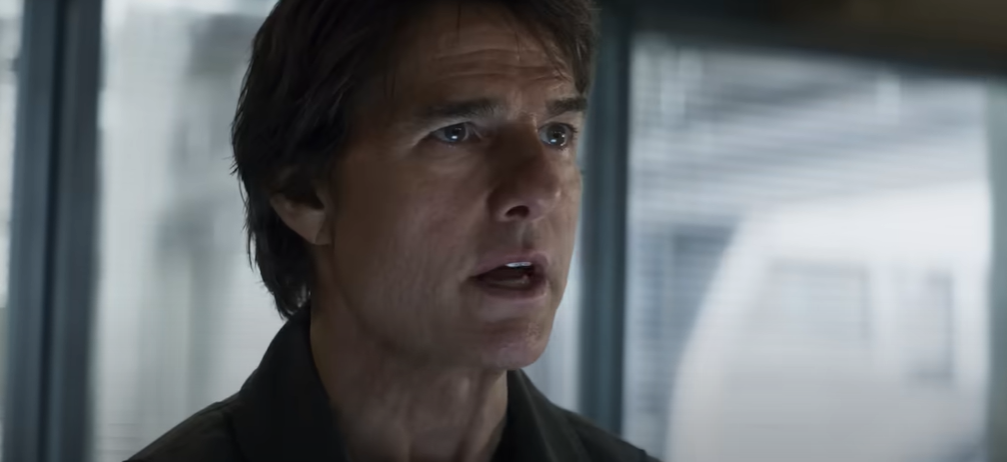| Character Name | Luther John Stickell |
|---|---|
| Portrayed By | Ving Rhames |
| Franchise | Mission: Impossible |
| First Appearance | Mission: Impossible (1996) |
| Last Appearance | Mission: Impossible – The Final Reckoning (2025) |
| Character Role | IMF Field Operative, Hacker, Strategist |
| Condition | Unspecified Illness (Final Film) |
| Final Mission | Developing counter-tech against The Entity |
| Place of Death | Underground hideout near London |
| Cause of Death | Explosion after disabling a nuclear device |
| Source | www.screenrant.com/mission-impossible-the-final-reckoning-luther-death-explained |

Luther Stickell’s last appearance in Mission: Impossible – The Final Reckoning subtly changes the tone of a series that is based on fast-paced stunts and international espionage. Luther is clearly changed from the first moments of his reintroduction; he is surrounded by medical equipment, appears weak, and is partially immobilized. Although he is never specifically mentioned in the movie, it is very clear that he has a condition. The once-dominant, composed-in-a-crisis figure is now seated behind a number of diagnostic monitors and oxygen tanks. His mind, however, is still incredibly sharp and focused on a high-stakes attempt to undermine The Entity.
In the last ten years, vulnerability without theatricality has become more and more accepted in film narrative. This change is reflected in Luther’s condition. The movie grounds his arc in quiet urgency rather than theatrics. Instead of trying to maintain his relevance, he is extending it. He is working from a dark underground facility to create a “poison pill” that could potentially destroy a sentient AI system. This dichotomy—physical decline and intellectual advancement—is both poignant and remarkably explicit in its purpose.
Rather than being lessened by his illness, his presence in the movie is strengthened by his purpose. Luther becomes the calm in the storm as Ethan Hunt races across continents. He represents the invisible stabilizer, the mission’s backbone. Longtime admirers are prompted to think about his illness. Most explosions are not as loud as his absence from the action. It serves as a reminder that noble sacrifice does not always have to be conspicuous.
The story lets viewers concentrate on Luther’s decisions rather than his symptoms by not defining the illness. The ambiguity is incredibly effective, especially in this situation. It increases the emotional impact of his choice to remain behind and turn off a nuclear weapon as Gabriel’s men approach. Luther accepts the fate he already appeared ready for after spending one last moment of companionship with Ethan—a quiet but sincere farewell.
The farewell that follows is not dramatic. Rather, it’s a dignified and silent resignation. Secondary explosives cause the tunnel to collapse, capturing him as he disarms the main payload. His demise does not take place in public. There aren’t any impressive speeches. All that is present is dust, metal, silence, and the unsaid bravery of a man who always knows when to take action.
This scene has an impact on the entire story, not just Ethan’s arc. Ethan’s other essential teammate, Benji, shows signs of being shaken. His subsequent deeds are more desperate, seemingly motivated by Luther’s unmet goals. Ethan’s resentment of Gabriel is also heightened by the defeat, transforming what was formerly a tactical issue into a very personal one.
The issue of legacy, or how to honor the original players while passing the torch, has been a challenge for franchises in recent years. Luther provides a startlingly nuanced response to that in his concluding chapter. His death makes room for more recent actors to take over parts without using harsh handoffs, such as Grace, Degas, and Paris. His moral and technical contributions are still woven throughout the story. In a single breath, he transforms from memory to mission.
This progression is further enhanced by Ving Rhames’ portrayal. Rhames, who has portrayed Luther in all of the Mission: Impossible movies since 1996, gives a modest yet profoundly moving performance. Like his character, he seems to realize that the end is near—not as failure, but as the inevitable conclusion of an incredibly resilient journey. Rhames conveys more with silence than many can with monologues by using deliberate gestures and poignant pauses.
Luther’s illness also illustrates a broader trend in action movies: letting their seasoned characters age effectively but gracefully. Franchises like Creed, where aging icons like Rocky Balboa take on the role of mentors rather than supporting characters, are notable examples of this trend. In Luther’s case, Ethan’s ultimate decisions carry on his legacy. Ethan completes Luther’s plan, which started subtly beneath the streets of London, by defending the Entity’s countermeasure and going into near-exile.
Emotional admiration has been the audience’s response. Luther’s exit is cited in online forums as one of the franchise’s most emotionally astute scenes. He becomes a martyr for moral and human intelligence rather than a victim of action. His last decision is especially creative since it combines strategic purpose with character logic. He wasn’t merely killed to further the plot. Even though he knew the cost, he gave his life to fulfill the mission.
It’s important to note that this decision reflects larger social themes. Through mentoring and legacy-building, aging professionals—who are frequently marginalized in fast-paced industries—are starting to take back control of their story. Because Luther is genuine rather than perfect, his storyline speaks to people dealing with long-term illness or job changes. Machine-dependent but still functional. Off the field, but right in the middle.
The loss is so poignant because of that realism. His death results from strategy, selflessness, and unwavering resolve rather than from a gunfight or vehicle chase. It confirms that seasoned experience and silent heroism have a place, even in stories with younger, more nimble characters. Luther receives the farewell he has always deserved in The Final Reckoning.
What was Luther sick with in Mission Impossible – The Final Reckoning?
The film does not specify Luther’s illness. However, his condition appears serious, requiring oxygen support and medical monitoring, suggesting a chronic or degenerative disease.
Did Ving Rhames’ real health affect the script?
There has been no official statement connecting Rhames’ real-life health to Luther’s on-screen illness, though the portrayal aligns naturally with the actor’s age and evolving physicality.
Why did the filmmakers leave Luther’s illness unnamed?
Leaving it unnamed allowed the focus to remain on his actions, not his condition. This choice created space for symbolic interpretation and emotional resonance.
Was Luther’s final act in the movie scripted as a sacrifice?
Yes. Luther chooses to stay behind and disarm a nuclear device, allowing Ethan to escape. He dies in the resulting explosion, fulfilling his mission purposefully.
How has Luther’s death impacted the franchise?
His death signals a transition in the franchise—moving from original cast to newer IMF agents. It also deepens Ethan’s motivations in the final scenes.
Did Luther complete the “poison pill” before his death?
He was near completion when ambushed. Whether it was fully operational remains unclear, adding narrative tension and possible future threads.
Is this the end for Luther in Mission: Impossible?
Yes, The Final Reckoning marks his final appearance. His death is portrayed with closure, leaving little indication of a return in future installments.
How does Luther’s death affect Ethan Hunt?
It intensifies Ethan’s resolve and likely informs his decision to disappear with The Entity, taking up a new personal mission in Luther’s memory.
Are there other characters in the film who know about Luther’s illness?
It is implied that Benji and Ethan are aware, but the illness is never discussed explicitly, maintaining narrative focus on the mission.
Where can I find more details about Luther’s story arc?
Detailed summaries and breakdowns are available at Screen Rant and the Mission: Impossible Wiki.
